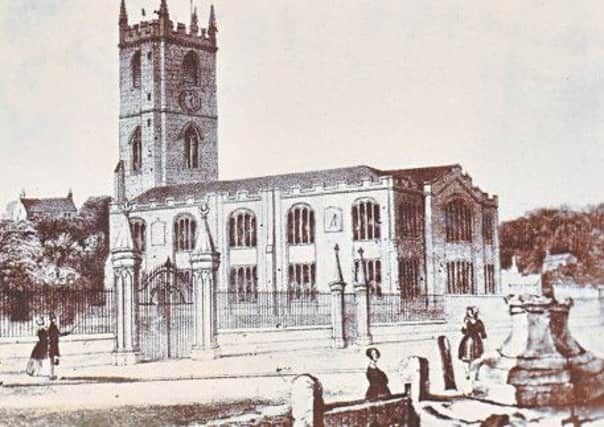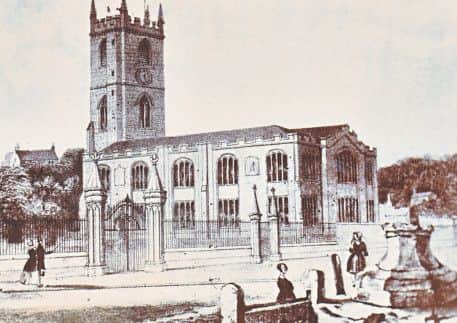St Peter’s Church: the greatest link with Burnley’s past


In doing so, may I remind you St Peter’s is taking part in the Heritage Open Days which are being arranged by Burnley Council and Burnley Civic Trust. It is open to the public on Saturday, September 13th.
There will be a guided tour of the church, led by Mr Ken Spencer, and a guided walk in the Top o’ th’ Town area, led by myself. Everyone is welcome to join us.
Advertisement
Hide AdAdvertisement
Hide AdSt Peter’s Church is first mentioned in the early 12th Century.


It was located on its present site at a crossing point on the river Brun and here the original village of Burnley - “the field by the Brun” – was established.
We have no images of the early church, but we have some idea of what it looked like from historical records which have survived. It is likely the first building was of timber which very probably had a thatched roof. We know that in the 15th Century a stone tower was built and it is clear the roof of the building of that time, and probably before, was substantial because of the height of the original pillars which remain inside the church.
The first picture I have chosen today is not the oldest image we have of the building.
Advertisement
Hide AdAdvertisement
Hide AdThis one dates from just before the middle of the 19th Century. By that time the 15th Century tower had been enlarged with a splendid peal of bells installed and the south wall of the nave had been rebuilt. This latter had been completed in the 1790s.
You will see, as we look through the images, all taken from old postcards, that a number of changes to the building have been introduced since the first image was produced. These tell the story of the building but not of the Church.
St Peter’s has played an important part in the history of our town since it was first built. As it was the only public place of worship, St Peter’s was the centre of religious life for the whole of an extensive chapelry almost until the Reformation. Towneley had had its own private chapel since the 15th Century and the Manor House at Ightenhill certainly had its own chapel in the Middle Ages although no one can be sure when it was first built.
In addition, it is thought there may have been a chapel at the monastic grange at Monk Hall, Extwistle, though it is likely it may not have survived into the 14th Century. There is also the possibility there was another chapel at the Monastic Grange at Cliviger, but this, again, may not have survived the 13th Century.
Advertisement
Hide AdAdvertisement
Hide AdWe will probably never know about the veracity of these speculations, but one thing is certain and that is St Peter’s served its community well and not only as a religious building. Much of Burnley’s local government was carried on at St Peter’s from the early 16th Century when the Manorial System was finally replaced by the Tudors.
As the years went by meetings held in the Vestry at St Peter’s (though I suspect a high proportion of them were actually held at the Sparrow Hawk, over the road) dealt with caring for the poor, local maintenance of the roads, keeping the peace and maintenance of the church building itself.
In fact, there is some dispute about the status of St Peter’s. Early records, especially one in 1170, refer to the building as a church. This would indicate St Peter’s had its own parish but, for most of its history, St Peter’s was a chapel of the great church at Whalley. St Peter’s did not have a vicar, it had a parson, originally a curate, someone who had a care of souls but who was responsible to a Vicar.
In Burnley the area served by the church was known, not as a parish, but as a chapelry. The old accounts which refer to the business of St Peter’s are known as the Chapel Warden’s Accounts, not the Church Warden’s Accounts. The curate is often referred to as the “Incumbent” a term which usually means the man in charge was of a lower status than a vicar. Similarly, Burnley, in historical records, is often referred to as a Perpetual Curacy.
Advertisement
Hide AdAdvertisement
Hide AdOf course, status is not everything but, more than just about any other building we have, and despite the relative modernity of parts of St Peter’s, this place proves the wisdom of the adage about “the sum being greater than its individual parts”.
St Peter’s is our greatest link with Burnley’s past.